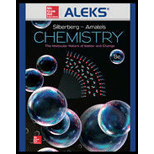
CHEMISTRY:MOLECULAR NATURE...-ALEKS 360
8th Edition
ISBN: 9781259916083
Author: SILBERBERG
Publisher: MCG
expand_more
expand_more
format_list_bulleted
Question
Chapter 10, Problem 10.93P
Interpretation Introduction
Interpretation:
Concept introduction:
The heat of the reaction
The formula to calculate
Expert Solution & Answer
Want to see the full answer?
Check out a sample textbook solution
Students have asked these similar questions
For the following alkyne, complete the reaction sequentially (that is draw the intermediate that we can’t stop at) and then name (complete name) all 3 molecules.
Given the reaction sequence below, answer the following.
A. Provide the structure for A.
B. Provide the structure for B (pay attention to stereochemistry).
C. Provide the structure for C.
D. What are the stereochemical designations for I and II (R/S)?
Which of the following is the most stable carbon radical?
Chapter 10 Solutions
CHEMISTRY:MOLECULAR NATURE...-ALEKS 360
Ch. 10.1 - Write a Lewis structure for
H2S;
;
SOCl2.
Ch. 10.1 - Prob. 10.1BFPCh. 10.1 - Prob. 10.2AFPCh. 10.1 - Prob. 10.2BFPCh. 10.1 - Prob. 10.3AFPCh. 10.1 - Prob. 10.3BFPCh. 10.1 - Prob. 10.4AFPCh. 10.1 - Prob. 10.4BFPCh. 10.1 - Write a Lewis structure with minimal formal...Ch. 10.1 - Prob. 10.5BFP
Ch. 10.2 - Prob. 10.6AFPCh. 10.2 - Prob. 10.6BFPCh. 10.2 - Prob. 10.7AFPCh. 10.2 - Prob. 10.7BFPCh. 10.2 - Prob. 10.8AFPCh. 10.2 - Prob. 10.8BFPCh. 10.3 - Prob. 10.9AFPCh. 10.3 - Prob. 10.9BFPCh. 10.3 - Prob. B10.1PCh. 10.3 - Prob. B10.2PCh. 10 - Prob. 10.1PCh. 10 - When is a resonance hybrid needed to adequately...Ch. 10 - Prob. 10.3PCh. 10 - Prob. 10.4PCh. 10 - Draw a Lewis structure for (a) SiF4; (b) SeCl2;...Ch. 10 - Draw a Lewis structure for (a) ; (b) C2F4; (c)...Ch. 10 - Prob. 10.7PCh. 10 - Prob. 10.8PCh. 10 - Prob. 10.9PCh. 10 - Draw Lewis structures of all the important...Ch. 10 - Prob. 10.11PCh. 10 - Draw Lewis structures of all the important...Ch. 10 - Prob. 10.13PCh. 10 - Prob. 10.14PCh. 10 - Draw the Lewis structure with lowest formal...Ch. 10 - Draw the Lewis structure with lowest formal...Ch. 10 - Prob. 10.17PCh. 10 - Prob. 10.18PCh. 10 - Prob. 10.19PCh. 10 - Prob. 10.20PCh. 10 - These species do not obey the octet rule. Draw a...Ch. 10 - These species do not obey the octet rule. Draw a...Ch. 10 - Molten beryllium chloride reacts with chloride ion...Ch. 10 - Prob. 10.24PCh. 10 - Prob. 10.25PCh. 10 - Phosgene is a colorless, highly toxic gas that was...Ch. 10 - If you know the formula of a molecule or ion, what...Ch. 10 - In what situation is the name of the molecular...Ch. 10 - Prob. 10.29PCh. 10 - Prob. 10.30PCh. 10 - Consider the following molecular shapes. (a) Which...Ch. 10 - Use wedge-bond perspective drawings (if necessary)...Ch. 10 - Prob. 10.33PCh. 10 - Determine the electron-group arrangement,...Ch. 10 - Determine the electron-group arrangement,...Ch. 10 - Prob. 10.36PCh. 10 - Prob. 10.37PCh. 10 - Prob. 10.38PCh. 10 - Prob. 10.39PCh. 10 - Determine the shape, ideal bond angle(s), and the...Ch. 10 - Prob. 10.41PCh. 10 - Determine the shape around each central atom in...Ch. 10 - Prob. 10.43PCh. 10 - Prob. 10.44PCh. 10 - Prob. 10.45PCh. 10 - Prob. 10.46PCh. 10 - Arrange the following ACln species in order of...Ch. 10 - State an ideal value for each of the bond angles...Ch. 10 - Prob. 10.49PCh. 10 - Prob. 10.50PCh. 10 - Prob. 10.51PCh. 10 - Prob. 10.52PCh. 10 - How can a molecule with polar covalent bonds not...Ch. 10 - Prob. 10.54PCh. 10 - Consider the molecules SCl2, F2, CS2, CF4, and...Ch. 10 - Consider the molecules BF3, PF3, BrF3, SF4, and...Ch. 10 - Prob. 10.57PCh. 10 - Prob. 10.58PCh. 10 - Prob. 10.59PCh. 10 - Prob. 10.60PCh. 10 - Prob. 10.61PCh. 10 - Prob. 10.62PCh. 10 - Prob. 10.63PCh. 10 - Prob. 10.64PCh. 10 - Prob. 10.65PCh. 10 - Prob. 10.66PCh. 10 - When SO3 gains two electrons, forms. (a) Which...Ch. 10 - The actual bond angle in NO2 is 134.3°, and in it...Ch. 10 - Prob. 10.69PCh. 10 - Propylene oxide is used to make many products,...Ch. 10 - Prob. 10.71PCh. 10 - Prob. 10.72PCh. 10 - Prob. 10.73PCh. 10 - Prob. 10.74PCh. 10 - Prob. 10.75PCh. 10 - Prob. 10.76PCh. 10 - Prob. 10.77PCh. 10 - A gaseous compound has a composition by mass of...Ch. 10 - Prob. 10.79PCh. 10 - Prob. 10.80PCh. 10 - Prob. 10.81PCh. 10 - Prob. 10.82PCh. 10 - Pure HN3 (atom sequence HNNN) is explosive. In...Ch. 10 - Prob. 10.84PCh. 10 - Prob. 10.85PCh. 10 - Oxalic acid (H2C2O4) is found in toxic...Ch. 10 - Prob. 10.87PCh. 10 - Hydrazine (N2H4) is used as a rocket fuel because...Ch. 10 - Prob. 10.89PCh. 10 - Prob. 10.90PCh. 10 - Prob. 10.91PCh. 10 - Consider the following molecular shapes:
Match...Ch. 10 - Prob. 10.93PCh. 10 - Prob. 10.94PCh. 10 - Prob. 10.95PCh. 10 - Phosphorus pentachloride, a key industrial...
Knowledge Booster
Similar questions
- Put the following carbon radicals in order of increasing stability.arrow_forwardDraw the major organic product for each of the following reactions (pay attention to stereochemistry).arrow_forwardThere are 2 reactions (that you know of) to achieve the following transformation: One reaction is favored over the other because it avoids a competing reaction. A. Draw the favored reaction scheme (not the mechanism), be sure to include all necessary reagents. B. Draw the reaction scheme that is not favored and include all the possible products.arrow_forward
- Both carbocations and carbon-radicals have trigonal planar geometry. True or Falsearrow_forwardTeflon (polytetrafluoroethene) is prepared via the radial polymerization of tetrafluoroethene. What other reaction conditions (reagent, etc.) are needed to accomplish this? A. NBS, Light B. Heat, Cl2 C. Peroxide, Heat D. H2SO4, H2O, Heatarrow_forwardWhich of the following compounds can be reacted with ethene to prepare 1,1- dichlorocyclopropane? A. CCl4 B. CCl2 C. CHCl3 D. CH2Cl2arrow_forward
- CI 4. How are the products of the following reaction related? (assuming we can control the chlorination as given by the reaction) C Cl2, light A. Enantiomers B. Constitutional isomers C. Regioisomers D. Diastereomers C +arrow_forwardVinyl and allyl radicals are equally stable due to resonance stabilization True OR Falsearrow_forwardAll of the following are true of Markovnikov’s rule EXCEPT A. The nucleophile adds to the most substituted carbon B. The more stable carbocation is formed in the transition state C. The electrophile adds to the carbon that has the most hydrogens D. There are no exceptions to this rulearrow_forward
arrow_back_ios
SEE MORE QUESTIONS
arrow_forward_ios
Recommended textbooks for you
 ChemistryChemistryISBN:9781305957404Author:Steven S. Zumdahl, Susan A. Zumdahl, Donald J. DeCostePublisher:Cengage Learning
ChemistryChemistryISBN:9781305957404Author:Steven S. Zumdahl, Susan A. Zumdahl, Donald J. DeCostePublisher:Cengage Learning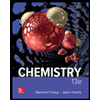 ChemistryChemistryISBN:9781259911156Author:Raymond Chang Dr., Jason Overby ProfessorPublisher:McGraw-Hill Education
ChemistryChemistryISBN:9781259911156Author:Raymond Chang Dr., Jason Overby ProfessorPublisher:McGraw-Hill Education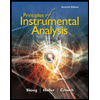 Principles of Instrumental AnalysisChemistryISBN:9781305577213Author:Douglas A. Skoog, F. James Holler, Stanley R. CrouchPublisher:Cengage Learning
Principles of Instrumental AnalysisChemistryISBN:9781305577213Author:Douglas A. Skoog, F. James Holler, Stanley R. CrouchPublisher:Cengage Learning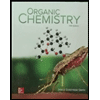 Organic ChemistryChemistryISBN:9780078021558Author:Janice Gorzynski Smith Dr.Publisher:McGraw-Hill Education
Organic ChemistryChemistryISBN:9780078021558Author:Janice Gorzynski Smith Dr.Publisher:McGraw-Hill Education Chemistry: Principles and ReactionsChemistryISBN:9781305079373Author:William L. Masterton, Cecile N. HurleyPublisher:Cengage Learning
Chemistry: Principles and ReactionsChemistryISBN:9781305079373Author:William L. Masterton, Cecile N. HurleyPublisher:Cengage Learning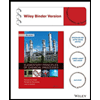 Elementary Principles of Chemical Processes, Bind...ChemistryISBN:9781118431221Author:Richard M. Felder, Ronald W. Rousseau, Lisa G. BullardPublisher:WILEY
Elementary Principles of Chemical Processes, Bind...ChemistryISBN:9781118431221Author:Richard M. Felder, Ronald W. Rousseau, Lisa G. BullardPublisher:WILEY

Chemistry
Chemistry
ISBN:9781305957404
Author:Steven S. Zumdahl, Susan A. Zumdahl, Donald J. DeCoste
Publisher:Cengage Learning

Chemistry
Chemistry
ISBN:9781259911156
Author:Raymond Chang Dr., Jason Overby Professor
Publisher:McGraw-Hill Education

Principles of Instrumental Analysis
Chemistry
ISBN:9781305577213
Author:Douglas A. Skoog, F. James Holler, Stanley R. Crouch
Publisher:Cengage Learning

Organic Chemistry
Chemistry
ISBN:9780078021558
Author:Janice Gorzynski Smith Dr.
Publisher:McGraw-Hill Education

Chemistry: Principles and Reactions
Chemistry
ISBN:9781305079373
Author:William L. Masterton, Cecile N. Hurley
Publisher:Cengage Learning

Elementary Principles of Chemical Processes, Bind...
Chemistry
ISBN:9781118431221
Author:Richard M. Felder, Ronald W. Rousseau, Lisa G. Bullard
Publisher:WILEY